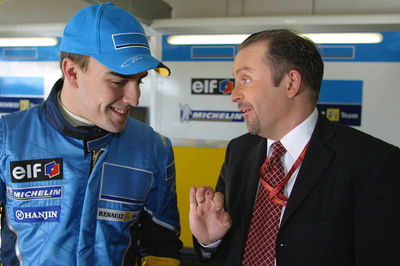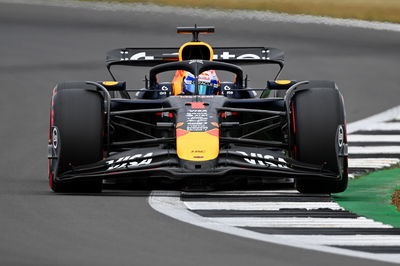Q&A: Jarno Trulli, Fernando Alonso & Allan McNish.
Formula One takes a welcome break from its mid-season jaunt around Europe to sample the delights of Canada and, more specifically, the Circuit Gilles Villeneuve in Montreal.
Although the circuit is largely regarded as a street venue, the three Renault drivers - Jarbo Trulli, Fernando Alonso and Allan McNish - who will be in action this weekend, all regard it as one of th best on the schedule, and look forward to the trans-Atlantic trip.
Q:
What do you think of the atmosphere at Montreal?

Formula One takes a welcome break from its mid-season jaunt around Europe to sample the delights of Canada and, more specifically, the Circuit Gilles Villeneuve in Montreal.
Although the circuit is largely regarded as a street venue, the three Renault drivers - Jarbo Trulli, Fernando Alonso and Allan McNish - who will be in action this weekend, all regard it as one of th best on the schedule, and look forward to the trans-Atlantic trip.
Q:
What do you think of the atmosphere at Montreal?
Jarno Trulli:
I have to say that the Canadian Grand Prix is one of my favourites. I like driving on this track and, above all, I love the way the circuit flows. Beyond the technical and sporting aspects, though, I think the atmosphere you get in Montreal both at the track and in town is great. Since the Canadian Grand Prix is normally held in June, the weather is usually nice and you can make the most of the long evenings to walk around the town and have a drink with friends in one of the bars, and basically just relax after a hard day on the circuit. Every time I get there, I'm glad to be back!
Q:
What characteristics does a driver need to do well on this circuit?
Allan McNish:
For me, the Montreal track is a lot like Monza. You get very slow turns linking up with fast straights, so you need a car with stable braking, good traction and a pretty powerful engine.
Q:
Fernando, you've said before that you don't like street circuits, so what's your approach going into the Canadian Grand Prix?
Fernando Alonso:
It's true that Montreal is a temporary circuit, but it has features I like a lot, and most of the track is laid out like a permanent circuit. I'm looking forward to this race: I feel calm but, at the same time, determined. I'm lying in third place in the drivers' championship and I'll do all it takes to stay there or do better. It's likely to be a tough weekend, because the track doesn't really suit our chassis and our engine, but I'm confident I'll do well.
Q:
After a series of European grands prix, the championship now takes us to North America. Do you plan any specific physical preparation?
JT:
As for every grand prix away from Europe, there are two things you have to take into consideration, the first of which is the time difference. For Canada, I manage to adapt to the different time quite well. I prefer to get here a few days early, so I can slowly adjust my body clock to the host country. As for physical preparation, we have done a three-day mountain bike session in England. At this time of year, Canada always has mild weather that's not too hot or cold. It's ideal for drivers, because we don't have to endure intense heat during the race.
Q:
Last week, for the first time since the start of the season, you took part in a private test session on a circuit. What was the agenda for these two days?
FA:
That's right, the team's testing calendar was changed because of the Heathrow Agreement. Since the start of the season, Allan has taken care of the testing but, for the session at Silverstone, it was Jarno and myself who took part. Actually, the Silverstone tests were basically used to prepare for the British Grand Prix. We carried out the tyre and aerodynamic testing for this race, and we tested new engine set-ups we'll be using. So it was quite a busy session for both of us!
Q:
Allan, the Canadian Grand Prix marks the halfway point of the season. How would you sum up the effect the Heathrow Agreement has had on the team's testing thus far?
AMc:
I'd say that, after seven grands prix, it has had a very positive effect. For each race, and especially the more 'exotic' grands prix, we've been able to get the most out of our extra two hours, and gather data that's given us a real advantage over the competition. Signing up to the Heathrow Agreement has meant that we're limited to 20 days of testing during the year, though this hasn't stopped us carrying on with our development programme as planned.
At this point in the year, the balance is definitely in favour of the Heathrow Agreement. Friday's private testing almost always follows the same schedule, which is decided according to the characteristics of the circuit. We do lots of tyre testing to fine-tune or improve Sunday's tyre choice, but that doesn't stop changes being made to the schedule, like in Spain and Austria, where I concentrated primarily on aerodynamic work.











